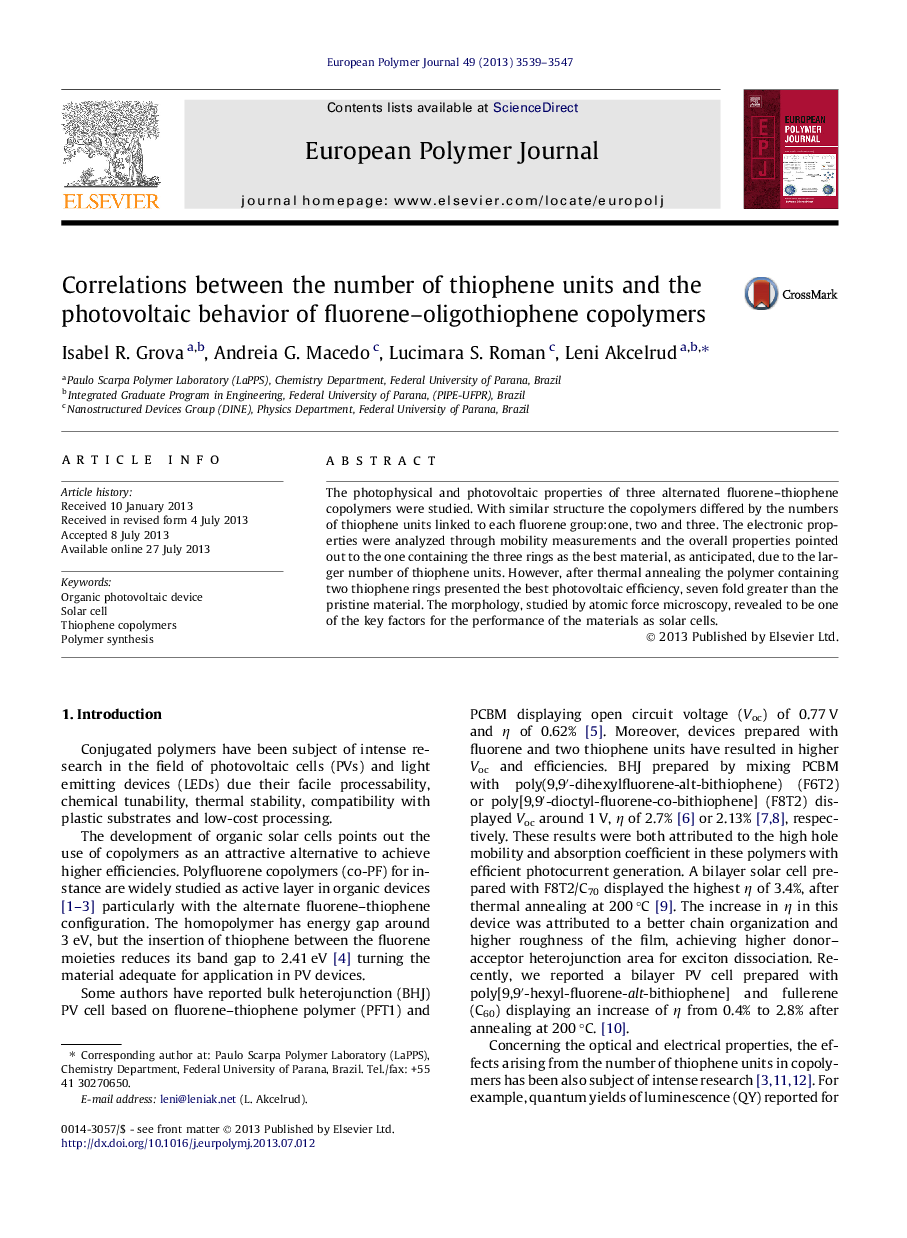| Article ID | Journal | Published Year | Pages | File Type |
|---|---|---|---|---|
| 1399618 | European Polymer Journal | 2013 | 9 Pages |
•Alternated fluorene–thiophene copolymers with similar structure were studied.•The number of thiophene units linked to each fluorene group were one, two and three.•The overall properties pointed out to the material with three rings as the best material.•After annealing the two thiophene copolymer had the highest photovoltaic efficiency.•The morphology was a key factor for the performance of the materials as solar cells.
The photophysical and photovoltaic properties of three alternated fluorene–thiophene copolymers were studied. With similar structure the copolymers differed by the numbers of thiophene units linked to each fluorene group:one, two and three. The electronic properties were analyzed through mobility measurements and the overall properties pointed out to the one containing the three rings as the best material, as anticipated, due to the larger number of thiophene units. However, after thermal annealing the polymer containing two thiophene rings presented the best photovoltaic efficiency, seven fold greater than the pristine material. The morphology, studied by atomic force microscopy, revealed to be one of the key factors for the performance of the materials as solar cells.
Graphical abstractFigure optionsDownload full-size imageDownload as PowerPoint slide
